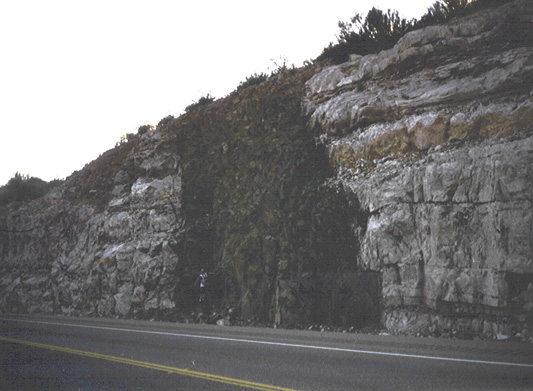Cross-cutting Relations

These sedimentary rock layers are being cut by a dike, or an intrusion of magma, that wells up and squeezes its way through the existing rocks. The law of crosscutting relations tells us the dike must be younger than the rocks it cuts through. |
You have learned how horizontality, superposition, and faunal succession can be powerful tools in assigning relative dates to rocks and fossils. From the principle of superposition, you know the seven horizontal layers in this image formed from bottom to top. Notice, though, the dark area in the middle of the rock layers has a different orientation than the horizontal layers. This geologic feature is called a dike and it is dark in color signifying a volcanic instruction.
You just discovered the next principle of relative dating, the principle of cross-cutting relations. It states that volcanic intrusions and faults are younger than the rock bodies they cut through. The igneous rock that makes up the volcanic intrusion is younger than the sedimentary rock it cuts through. The law of cross-cutting relations was first described by James Hutton. It can be particularly useful when studying faults and when trying to ascertain how many years ago displacement along a fault took place.